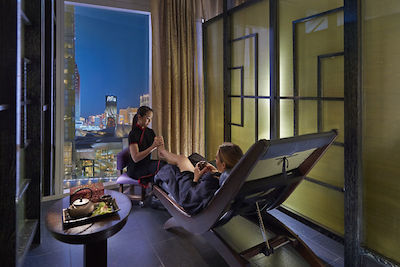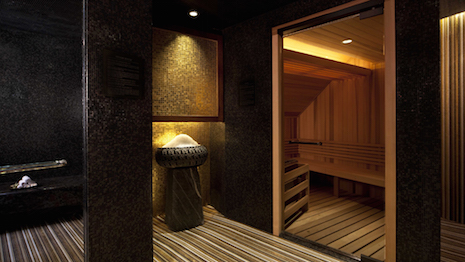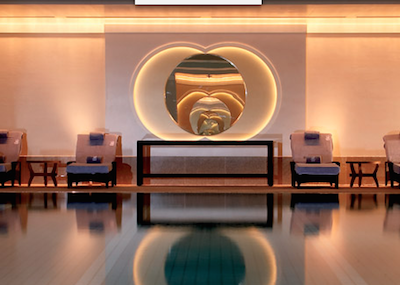Wellness tourism is projected for an 11 percent compound annual growth rate through 2020, according to Technavio analysts.
For Technavio’s Global Wellness Tourism Market 2016-2020 Report, wellness tourists are split into two groups, with primary wellness tourists traveling entirely for wellness purposes and secondary wellness tourists indulging in wellness-related activities but planning travel for other reasons. Primary wellness tourists traveling internationally outspend the average international tourist by at least 60 percent, signaling a growing and valuable revenue stream for hotels.
“With the adoption of wellness activities among consumers as a part of changing lifestyle, there is a growing demand for multiple price points and increased convenience and accessibility, thereby giving rise to new business models,” said Abhay Sinha, author of the report and analyst for Technavio. “For instance, franchising and membership, pioneered by the Massage Envy chain in the U.S., are becoming more common in the market.
“Likewise, the desire for convenience and one-stop service has led to the convergence of spas with other industries,” Mr. Sinha said. “For instance, aesthetic clinics that have traditionally focused on beauty are now offering massages and body work; salons, gyms and fitness centers, doctors’ offices and hospitals are providing massages and other spa-related offerings alongside their standard services.”
Feeling good
Wellness tourism is still largely a domestic practice, with international wellness tourism accounting for less than a third of the market’s revenue. Within the domestic segment, primary wellness tourists accounted for 12 percent of the revenue.
As the market grows, the ratio of international to domestic wellness tourist will remain virtually unchanged. The market share of international will increase only from 34 to 36 percent.
Those who do engage in international wellness travel hail from more developed countries, namely Europe, North America and developed Asian countries such as Japan. The U.S., France, Germany, Austria and Switzerland are the preferred tourist destinations.

Spa at Mandarin Oriental Las Vegas
Despite the prevalence of established Western countries as preferred destinations, the low-cost treatments in South America and the Middle East are seeing an increase in tourism that will help grow the market through 2020.
Wellness tourism is growing in developed countries in part due to the continuously increasing rate of double-income households, which results in higher purchasing power and relatively low volatility in disposable income. The growth of Southeast Asia, namely Malaysia, Indonesia and Vietnam, is also projected to fuel the market.
The CAGR for APAC will grow at a rate of 14.35 percent, reaching $204.3 billion by 2020. The region has the most spas, adding 10,000 in the past decade alone, spurred largely by hotel and resort spas.
By contrast, the expenditure share of the top countries decreased from 63 percent in 2012 to 57 percent in 2015, with India, Mexico, China and Turkey absorbing those consumers.
Luxury travelers currently skew toward Gen X and boomers, but demand is growing from millennials. However, across all generations, word-of-mouth remains the primary motivator, and personalization and unconventional or alternative practices are also gaining popularity.
Men are also making themselves known in the market, as their inclination toward spas and services ranging from massages to manicures and pedicures grows. This is particularly true of older men trying to maintain their appearance, but young men are also starting to see grooming and beauty as a necessity.
About 10 percent of U.S. cosmetic patients are male, and the number seeking it in Germany has doubled. With men venturing into the territory of cosmetic surgery, it follows that they will be receptive to hotels’ wellness initiatives as well.
Worldwide shifts in lifestyle are also preparing the wellness tourism market for growth. The necessity for health and wellness follows naturally from increased awareness; anti-aging measures are gaining popularity in the East and the West; wellness initiatives are also treating recently discovered negative health effects of stress.
“As consumers grow more sophisticated, they are beginning to place a premium on wellness experiences, which are associated with authenticity and good results,” Mr. Sinha said. “Businesses have responded in different ways, such as the introduction of boutique hotels and resorts, locally inspired environments and spa treatments, adoption of traditional healing practices and local ingredients, and new investments in thermal and mineral springs.
“Entrepreneurship and business innovation across the world will send the spa and wellness market on a growth path, which is firmly anchored to consumer demand,” he said.
Mixing business with wellness
Numerous hotels have increased focus on wellness initiatives recently in response to the fast growing market.
For example, last year The Peninsula Hotels began combining Western and Eastern health philosophies to relaunch its wellness programs across all properties.
Redirecting attention to the program will open a wellness center, focus on sleep patterns of stressed guests, create a spa experience focused on natural products, offer massage opportunities and provide healthy dining options. The surge of healthy lifestyle options across Peninsula properties will reflect upon the brand’s dedication to guests and their lifestyle choices (see story).
Other hotels are finding creative ways to incorporate wellness into the day of all travelers.
The Ritz-Carlton, Bali, Indonesia is sharing its “Revitalizing Secret” with the health-conscious business professional.
Ritz-Carlton’s Bali hotel is now offering three healthy meeting experiences that will add team-building and productive fun into a long day of business and work. The initiative showcases Ritz-Carlton’s commitment to the comfort of its guests as well as its dedication to a healthy lifestyle (see story).
“The concept of luxury wellness tourism is changing,” Mr. Sinha said. “Individuals going for wellness tourism (primary wellness travelers) are more focused on seeking deeper relaxation.”
“The new wellness concept is based on seeking a more integrated approach toward addressing the root cause of stress – either structural, emotional or lifestyle-related issues,” he said. “Wellness tourists are increasingly becoming health conscious seeking rejuvenation.
“Vendors are also taking a different route to complement what tourists want. For instance, Thailand-based hotel company Aman has taken a new approach to meet tourists demand. The company has started new wellness programs called Individual Wellness Immersions across its 30 chains of hotels and resorts across the world.”
from Travel and hospitality – Luxury Daily https://www.luxurydaily.com/wellness-tourism-primed-for-growth-from-men-southeast-asia/
via Your #1 Source to Finding Luxury & Designer Goods, Handbags & Clothes at or Below Wholesale: Click Here.



No comments:
Post a Comment